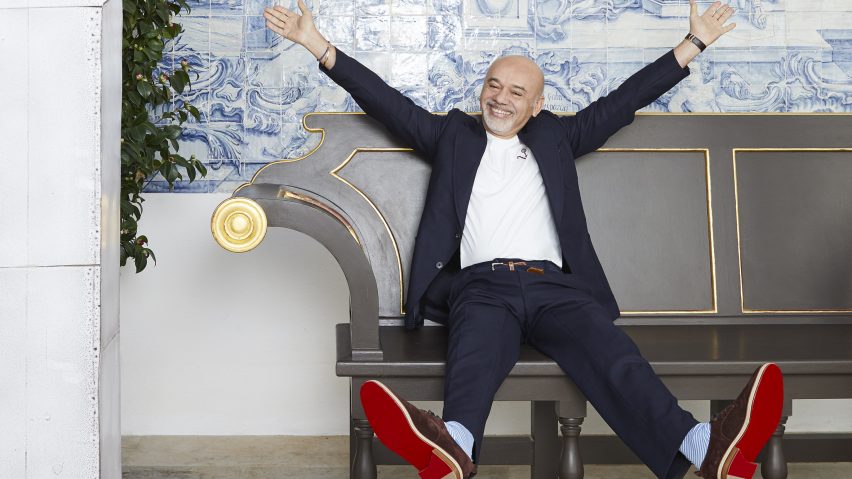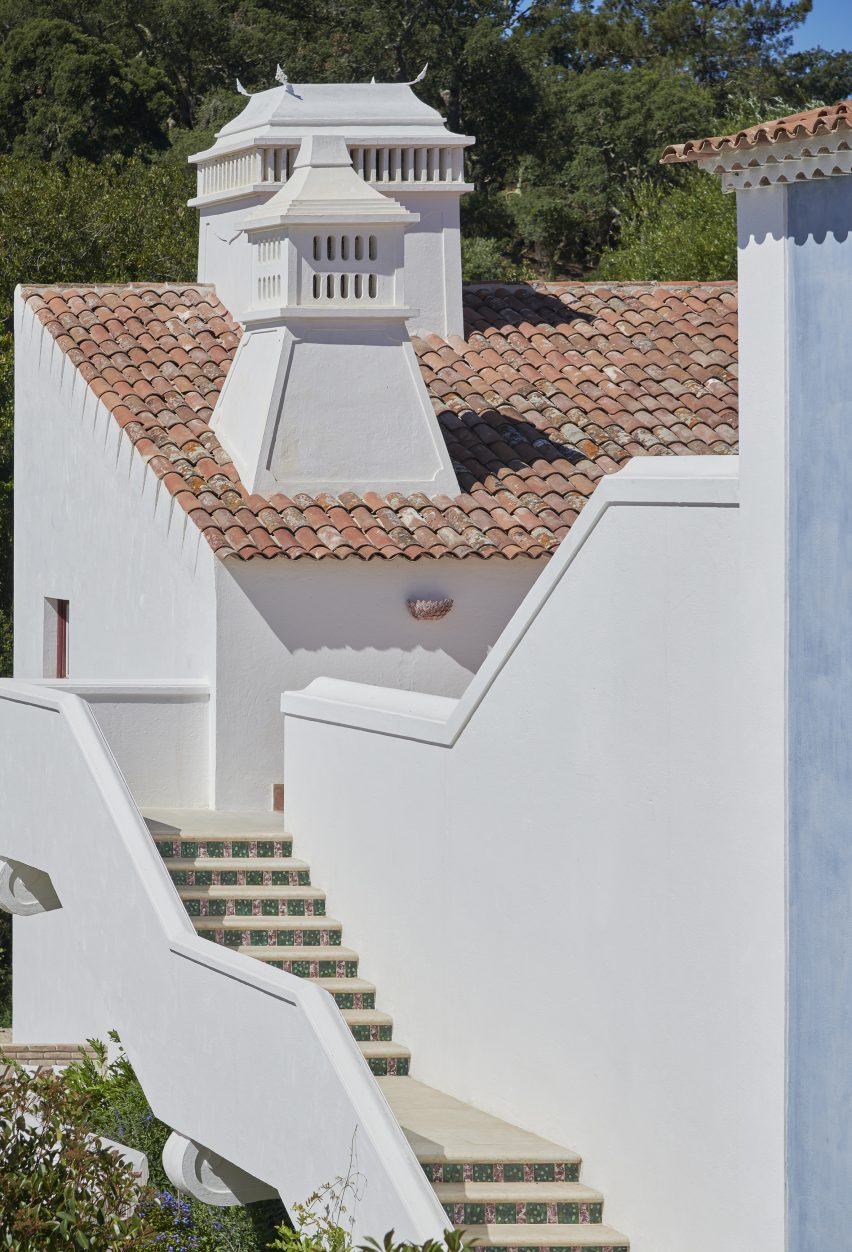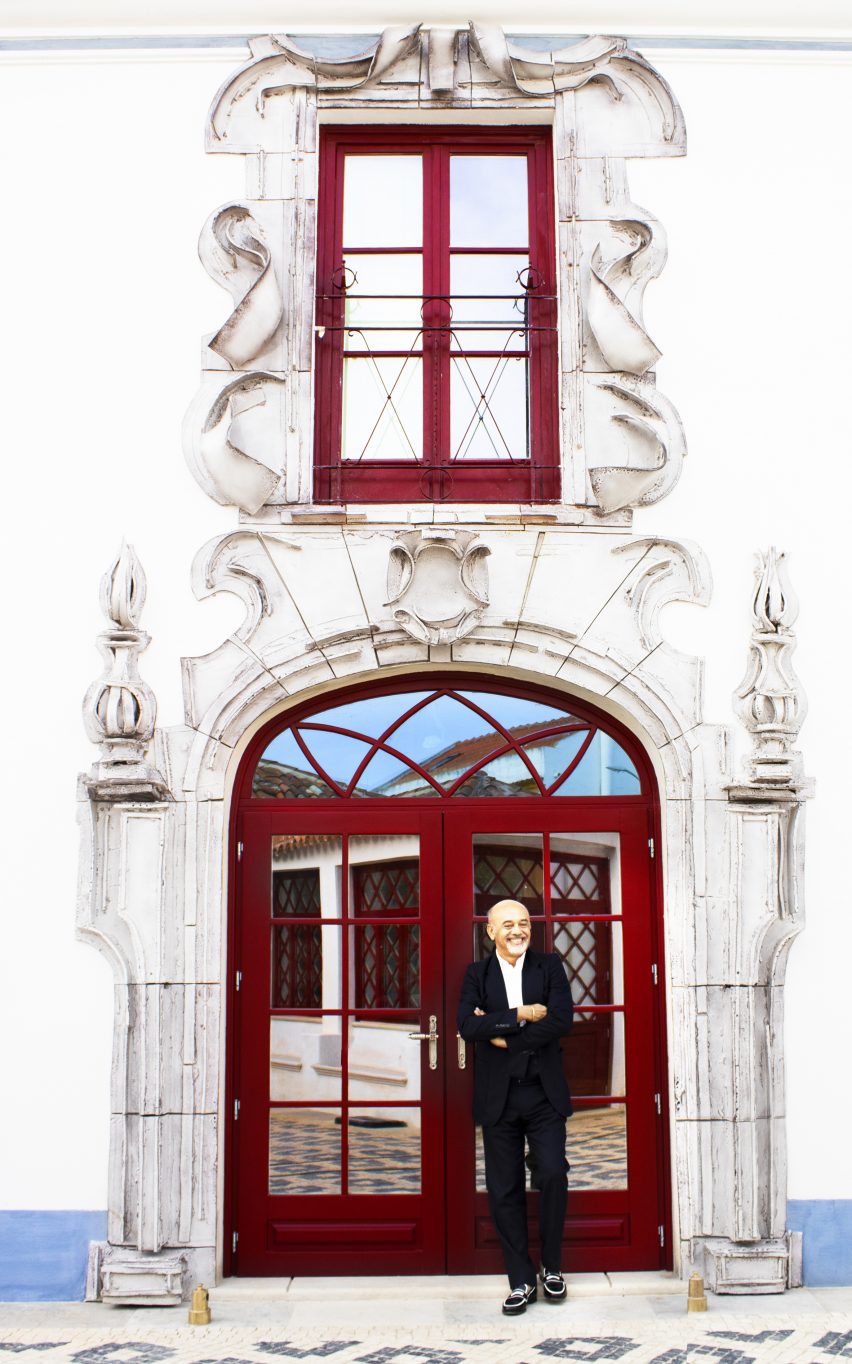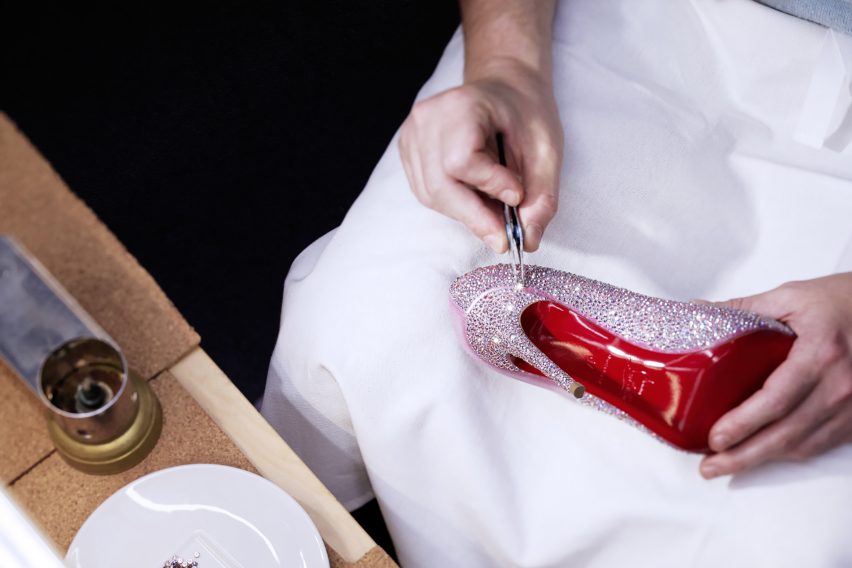
"It's fine to be useless, totally fine" says Christian Louboutin
Following the opening of his first hotel in Portugal, French designer Christian Louboutin, famous for his red-soled shoes, discusses creativity and sustainability in this exclusive interview.
"The secret to good design – and it's a very basic answer – is to be true to yourself," Louboutin told Dezeen. "You can take advice from people but at the end, someone has to be the boss: someone has to decide. At one point, someone has to decide to stay true [to the original idea]."
Best known for his shoe design, Louboutin's career spans more than 40 years, across which he has remained true to his creative impulses.
"The most important thing is that it looks good"
These impulses have been most recently expressed in his latest venture, Vermelho – an opulent 13-room boutique hotel in the quiet Portuguese village of Melides, south of Lisbon, which he designed in collaboration with architect Madalena Caiado.
Louboutin cites the hotel as an example of always staying true to himself. He recounts telling the team "let's have a lot of chimneys – the kind that you see on the roofs in the south of Portugal – because it's very nice".
The architects tried, and found it difficult, to connect all the chimneys through to fireplaces in the rooms so that they would function as flues.
"I just want the roof with the chimneys," Louboutin told them. "We don't need working chimneys. It doesn't matter if they don't go where they should go – it's okay if it doesn't work!"

The team were concerned that purely ornamental chimneys, where form did not follow function, were problematic because "they are not useful", Louboutin recalls.
"But they're absolutely the most beautiful thing," he contended. "The most important thing is that it looks good. That's the most important thing at the end of the day."
"I could feel that I was a bit alone at the beginning going 'more chimneys! more chimneys!' – because they were really, completely useless. But it's fine to be useless, totally fine."
"You don't have to be useful all the time," the designer added. "The chimneys were definitely a decision that I took by myself. You sort of have to be perseverant. And when you are believing in something, you have to go for it."
"When you do something that you love, you will have never wasted your time"
Louboutin left home at the precocious age of 12, going on to design women's shoes for Charles Jourdan, Roger Vivier and Yves Saint Laurent before founding his own company in 1991.
The eponymous firm has since grown to a $2.7 billion business that incorporates the design of leather goods, pet accessories, perfume and beauty products.
Despite his enormous success – or perhaps because of it – Louboutin continues to seek pleasure in creative projects.
"When you do something that you love, even if it doesn't work, even if it's useless, as long as you have pleasure doing it and it pleases you, you will have never wasted your time," he said.

"If you do something that you don't really love, but you think 'oh it's better like this, it's more comfortable, it's more useful' and you don't really like it, at the end the level of satisfaction – yours and probably other people's – is way lower," he added.
"But also if it doesn't work, then you really have wasted your time."
While these principles have guided his design practice, the business landscape since the early '90s has changed significantly.
Louboutin, who turned 60 in January this year, continues to navigate them successfully. For instance, the brand has nearly 17 million followers on Instagram.
"Everything has definitely changed due to social media," the designer said. "When I first started, every brand name had a face which corresponded to the brand name. Yves Saint Laurent wore glasses and he was called Yves Saint Laurent. Givenchy had a person behind it called Hubert de Givenchy."
"The names are just the brands now," he went on. "It's a different ballgame, completely. I don't say if it's good or bad or whatever, I have no time for judging – but it's completely different and the sense of freedom has kind of disappeared."
Something else that has changed over the decades is the conversation around sustainability.
The Christian Louboutin business now has a whole department dedicated to sustainability, which he says attempts to look at "everything: how it's made, where it is made, where it's coming from, have people involved been well treated, et cetera – which is all important – but also discussing how to work in a better way".
"Sustainability is not only for products but is also to do with people," he added. "Sustainability comes back to respect."
Louboutin feels strongly that social sustainability and supporting creative industries in their indigenous setting is just as much a part of sustainability as the eco-credentials of materials and the supply chain.
"When there is a part of a shoe which features some carving that is made in a very specific place – let's say by artisans of a special region – in this instance, I always refuse to copy that savoir faire and go to a country which could, and in a cheaper way, copy it."

Louboutin has a track record of valuing craft and the handmade.
Caiado, the Portuguese architect who co-designed the Vermelho hotel, told Dezeen how, especially during the construction phase, Louboutin "brought a more tactile way of thinking – almost as if the hotel was designed at the scale of the hand of those who built it".
"Artisanship is really a very important part of the culture of countries – it speaks about people, about the culture or a part of a country, and it's a necessity to keep it alive," emphasised Louboutin.
"You cannot use artisanship by reproducing it elsewhere. Why? Because if you take the essence of artisanship from a specific place, and you give it to another place, to make it cheaper (which is the only real reason), you are basically starting to eat – and to destroy, a bit – the ecosystem of a region or country. Sustainability goes all the way to protecting artisanship."
"You may not like colours, but you still like red"
Over the years Louboutin has had to protect his own artisanship – and there have been several instances of litigation to prevent trademark infringement on his signature red sole.
But while it has become the designer's calling card, Louboutin does not feel the iconic red sole has pigeonholed his creative output or opportunities.
"Every creative project in itself is an exciting thing," he explained. "I don't have a projection of what I should do. Projects with me are pretty organic – there is no business plan."
Louboutin has never limited himself to shoe design – and while the colour red has become his signature, he insists it is not because of the success he found with it but because of his abiding passion for the hue that he continues to use it across his projects.
Vermelho, the name of the recently-opened hotel, is also the word for red in Portuguese.
"Red is a transition. It's such an emotional colour, but also it's not necessarily linked to colour. You may not like colours, but you still like red," Louboutin enthused.
"If I had to go back and choose another colour, I would still choose red. If I have to stick to one as an identity, I will still keep my red."
The lead image is by Jose Castellar.
Dezeen In Depth
If you enjoy reading Dezeen's interviews, opinions and features, subscribe to Dezeen In Depth. Sent on the last Friday of each month, this newsletter provides a single place to read about the design and architecture stories behind the headlines.